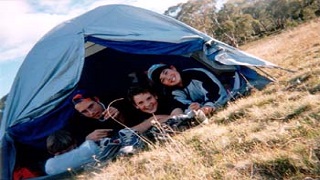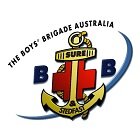WHAT DO YOU REALLY NEED?

A tent provides essential protection from wind, rain, sun, bugs, and in some cases, snow. Tents are also a source of comfort and security in the outdoors. Finally, a tent is an investment which should last almost a lifetime. There are a wide variety of types and shapes available and to choose the right one you need to think about your camping needs. * How many people will be using it at one time? * What kind of camping will you be using it for? * What kind of weather will you be encountering? * Is weight or leg and head room more important?
TYPES SHELTERS
These are constructed of one-piece of fabric. Usually carried for emergency survival or for protection on a one-day outing, they can also be used as a tarp or a dining fly.
FAMILY CAMPING
These are designed with lots of room for the comfort and convenience of four or more people. They are usually heavier and characterized by awnings, large windows and doors, and high peak heights.
BACKPACKING
These are light weight, compactibility and easy assembly. All design and construction efforts are concentrated on making them small and lightweight for easier transportation in a backpack or on a bike. In general, backpacking tents are two-layer and average three pounds per person, or 20 square feet per person.
FOUR-SEASON
These tents are Mountaineering/Snow camping tents are similar to backpacking tents but are specifically designed to withstand snow loads, high winds, and other climatic conditions associated with winter camping. Steep walls, oversized webbing, a strong frame, and a vestibule (to store gear and/or cook within shelter) are often featured in these tents.
DESIGN
All tents should provide adequate ventilation and protection from the elements. Though simple one-piece tents will provide this, two-wall tents are the most common, keeping you warmer and dryer. The breathable tent body allows perspiration and respiration to pass through to the rain fly where it condenses and runs off. The rain fly also provides protection from the elements.
SHAPE
Tent shapes can be generalized into four separate categories. Within each of these there are a multitude of variations.
A-FRAME, also known as a pup tent, is the classic tent shape. They are easy to set up, roomy and stable, though somewhat unruly in the wind. Best of all, A-frames are inexpensive. They are not generally self-supporting, and some have tent support poles in the middle of the door.
CABIN tents are shaped like a house. They are strictly for family camping, as they are bulky and heavy, but they do have the largest inside space. Those that are freestanding are sometimes referred to as Umbrella tents.
DOME tents evolved to solve the limitations of the A-frame. If it is a true geodesic dome, the poles cross and form a series of interlocking triangles. This structure makes it freestanding, stable and taut, even in strong wind. Head and elbow room are ample, as the dome offers maximum space for its weight. It is available in many sizes and configurations, the largest being the Family dome. These are freestanding and offer the most compact, lightweight design for family camping, which is ideal for today’s smaller cars.
TUNNELS (also called tube or hoop tents) were developed as tent designers began to concentrate on maximizing floor space area, in relation to the size of the tent. The covered-wagon, two-hoop design characterizes a range known as the tunnel tent. Tunnels are much lighter, and more compact than domes, and some even allow room to sit up at one end. Most are not freestanding and must be pitched in the right position to the wind to provide good stability. Ultralight or Bivy tents take the tunnel design to the next logical extreme of minimal size and weight. They suffer from the same extremes which they offer–minimal space and very specialized.
SUPPORT
The majority of tents are freestanding, but some need guy-lines for support. These freestanding tents are easy to set up and easy to move if your location is not satisfactory but must still be staked down so they don’t blow away.
FABRICS
Most tents are flame retardant, not necessarily fireproof. The benefits are obvious, especially since many people cook right in front of the tent. Floor and fly fabrics are coated with urethane or other water-repellent coating to prevent moisture from passing through. This reduces the tear strength of the fabric somewhat, but is necessary for protection from rain, dew, and ground moisture. Heavier fabrics, zippers and frames are used in tents that are intended for heavy use situations such as scouting, outfitting and guiding. Mesh is used to create windows and provide ventilation in the tent. The placement of these windows and doors helps with cross ventilation. There are some tents that are almost entirely mesh, for summer sun and bug protection.
CONSTRUCTION
When set up, the tent should be uniformly taut with no sag lines. This indicates good design and means there is an even distribution of stress along the seams when the tent is pitched. Floors in moderate to better tents use a bathtub construction, wrapping the floor up the side of the tent and then sewing it. This keeps the seam up off the ground away from moisture that could seep through. A standard flat floor is usually found in cabin tents and lower priced tents. In a well made tent, seams should have no raw edges or missed stitches. Lap-felled seams (the same folded, double-stitched seam used for blue jeans) should be used around the floor for strength and uncoated nylon fabric should have taped seams (no raw edges) to prevent fraying and unraveling. Reinforcements with extra stitching and bar tacking at stress points are another indication of quality construction.
SET UP AND USE
Select a tent site that is clear of any sharp objects, out of the wind, and in an area that will drain well should it rain. Pitch the tent with the zipper open. Ground covers can protect your floor from sharp objects as well as from moisture. They should not extend beyond the edge of the tent, otherwise they will collect moisture which could enter your tent. Guy lines from the tent fly to stakes should be taut enough to keep the fly from touching the body of the tent (which allows moisture on the fly to soak into the canopy). Avoid wearing shoes or boots in the tent to protect the floor. When away from camp, leave tent doors zipped so curious animals can not check out your habitat. Never leave a tent set up in the sunlight longer than necessary. Ultraviolet rays weaken nylon after prolonged exposure, and a tent erected for a whole season will have a considerably shortened life expectancy. Use your rain fly even on clear days, as it will act as a sunscreen for your tent on sunny days. The coated rain fly is less susceptible to ultraviolet damage than the tent and much easier (and less expensive) to replace. When taking the tent down, fold the poles from the center out so as not to place undue strain on the shock-cord.
CARE AND CLEANING
Clean your tent by setting it up and wiping with a damp sponge and mild, non-detergent soap. Pitch or grease may be removed with a small amount of kerosene. Never machine wash your tent. A light coat of silicone lubricant on coil zippers will prevent freezing and keep them free-sliding. The colored, anodized finish on aluminum poles protects the metal from corrosion. Keep them clean, dry and scratch-free. A light coat of silicone lubricant will protect your poles from corrosion and help the sections to engage more easily.
SEAM SEALING
All the material on the floor and fly of a tent is coated with urethane for water repellency, however, your tent is not necessarily waterproof. The needle holes from stitching will allow water to come through the tent, and while some manufacturers seal some or all of these seams, it is not common. Seam-sealing is the practice of applying liquid urethane to the needle holes for protection. Pitch the tent (with the fly inside out) 4-6 hours before you seal the seams. Apply a thin coat of sealer, allow time for drying and do it again. This should last for about two years.
STORAGE
Be sure your tent is thoroughly dry before storing, or mold and mildew are likely to grow and the waterproof coating will be damaged. Be sure even double-stitched areas such as seams are dry and wipe off any dirt from the poles, pegs and bottom of your tent. Store in a cool, dry place. Never leave your tent in a hot car trunk as high temperatures damage the coating on the material. A tent’s weight versus interior space is one of the most important things to balance, with one feature always outweighing the other depending on end use. For example, the casual weekend car camper only has to carry the tent from car to camp and is more concerned with space, headroom, and comfort. The weekend backpacker, however, has to carry every ounce of the tent on his back, so weight is the primary concern.
Read about low compact camping
